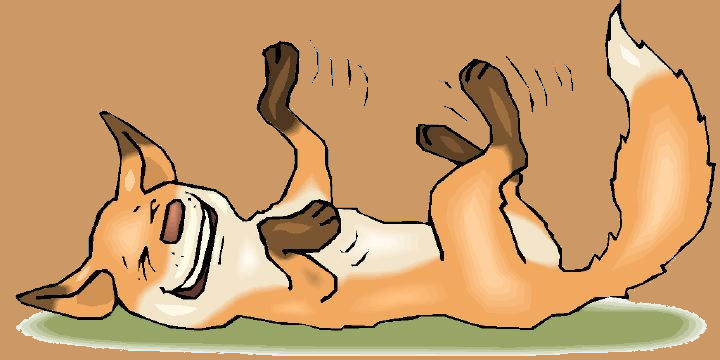Ken Fuchs' Web World
Click on the pictures to see larger images.
Rudolph Fuchs
Christmas Cheer


A Loomful of Christmas Cheer
By BETTY COOK
Scene Staff Writer
From tiny tapestry, a holiday tradition grows
Nobody laughs when Rudy Fuchs sits down to play a few bars of ragtime. Sometimes it's at the piano, where the bright cheer of syncopated Twenties and Thirties tunes flows easily from his fingers. This time of year, though, he changes instruments and rhythms, to compose a new variation on a different kind of ragtime. Rudy's Christmas Rag, you might call it tongue-in-cheekily—his instrument is a complex 16-harness loom, and the "rag" is for real, a miniature work of art designed to sing the composer's Christmas greeting in silent chords of color.
Denton's Rudolph Fuchs (pronounced "Fox") designed and wove his first Christmas card in 1957. The cries for encores which began then have never stopped, although there have been times when Fuchs himself has longed to stop. Some years, the slight, gray artist admits, he has been tempted not to bother with all the labor it takes to weave, cut, mat and mount his originals. "But then I'll start hearing from friends who say, 'We can't wait to see what your card will be this year/ and I always end up doing another one after all." He laughs ruefully. "This year, I'll be mailing cards to almost 500 names—seems I keep meeting people who somehow think they should be on the list."
Small wonder. Fuchs' miniscule masterpieces have gained collectors' item status among those who receive them—or wish they did. Some have framed the series, and hang them annually to brighten a Yule wall—with the glowing symmetry of 1959's double angels, 1965's shimmering snowflakes, the deeply-textured fantasy tree of 1968.
"That was the year I got my more complicated loom," Fuchs explains. "Before that, I had woven them on an eight-harness loom. Then, after my visits to Chartres and Notre Dame in Paris in 1955, I came back and designed another complex card, to look like a rose window of stained glass."
The 1971 greeting, more difficult than most others from the weaver's standpoint, featured a fat golden partridge perched in a fruited pear tree. "I'd tried to work out the design for years," Fuchs says critically. "It was harder because the bird could not be symmetrical. But it turned out pretty well, I think—although it probably looks more like a pigeon in a bois d'arc. The '73 design, a green tree framed in red and gold squares and rectangles, seemed to cause a lot of comment—but it is actually one of the simpler designs as far as weaving is concerned."
Fuchs should know about weaving. "In 1935," he says, "I ordered a book and an eight-harness table loom and taught myself how to weave. And then, starting about 1940, I taught weaving at North Texas State University, where I'd already been teaching art since the early '30s. I was the only one who taught weaving there until I retired in '72."
Modestly, he almost forgets to mention that he polished his knowledge of the ancient craft in London, where just before World War II he enrolled as the only American in a class of 45 studying the techniques of the Weavers, Dyers and Spinners Guild of England, Scotland and Ireland. He subsequently studied further in the Chicago School of Design, where he was instructed in design by Laszlo Maholy-Nagy, founder of the modern constructional movement in art.
The creative discipline of Fuchs' woven designs reflects his training. The walls of his low-flung North Denton home are alive with the colors and textures of his work. A three-dimensional woven mobile turns in the double doorway between his studio-den and the 50-foot glass-walled living room that spans the entire rear width of the house. A handsome wall hanging is one of this room's focal accents, its pattern a strong statement that appears to be pure abstraction. It is not, however.
"I worked out a way," Fuchs explains, "to make a design from people's names. Like a code—each letter is given a certain numerical position on the draft I use to work out my designs. So when I spell out a word, each letter becomes a dot of color that shows where a thread, will be woven through."
The weaver's art shows itself in practical trappings, too—the home's bedspreads, curtains, place mats, even bath mats all are Fuchs' own products, turned out between the projects that have won him national acclaim and awards in the several weavers' guilds to which he belongs. Color blooms at his hands outdoors as well—he is active in a number of iris and day lily fanciers' groups. "I have 1,200 varieties of each in my gardens,” he says, "and when the weather allows it, I'm more likely to be outside digging than inside at the loom. Which is one of the reasons I sometimes think I won't have time to do my Christmas cards again."
There are other reasons—like the monthly musicale meetings he enjoys with a dozen other old-time North Texas State ragtime enthusiasts. Like the several trips he makes each year to craft and guild meetings and shows in various parts of the world. Like the ambitious list of gifts he creates each Christmas for his eight brothers and sisters and their families.
But late fall so far has always found Rudy Fuchs back at his loom, indulging collectors' clamors for the woven greetings they claim they must have to make Christmas complete. How many hours will the year's project cost him? At least 100, he estimates. "This year, I am weaving 13 designs wide, and there are 1,600 threads across, each of which has to be threaded individually." He sighs, thinking of the work still to be done. "Even after the weaving's finished, I spend night after night for a long time making the cards. They do take a lot of time."
He smiles, not at all unhappily. "But then people have already been calling and writing, asking what this year's card will be. That's my secret—I tell them they'll have to wait and see. So many of them—I guess you could say each person that gets one of my cards is getting an actual labor of love . . ."












